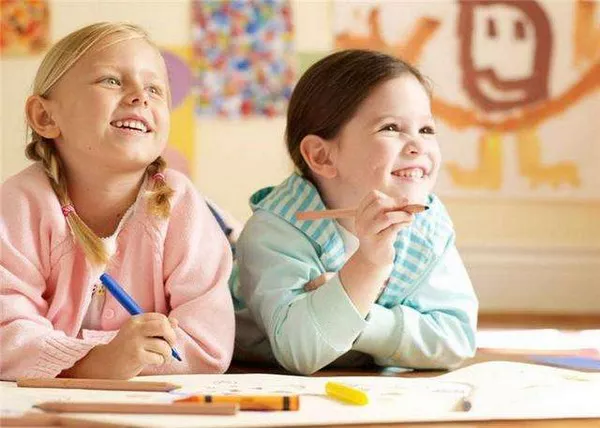The color red is universally recognized as the color of love, passion, and desire. This association is so deeply ingrained in our collective consciousness that it transcends cultural and geographical boundaries. But why is red the color of love? This article delves into the psychological underpinnings, cultural significance, and biological factors that have cemented red’s place as the quintessential color of love. Through a comprehensive exploration of scientific studies, historical context, and cultural narratives, we will uncover the reasons behind red’s powerful connection to love and romance.
The Psychological Impact of Red
Color psychology is a field that studies how different hues affect human behavior and emotions. Red, in particular, has been shown to evoke strong emotional responses, which play a significant role in its association with love.
1. Stimulating the Senses:
Red is a highly stimulating color that captures attention and evokes excitement. This sensory stimulation is linked to increased heart rates, heightened arousal, and a sense of urgency.
Increased Heart Rate: Studies have shown that exposure to red can cause a measurable increase in heart rate, mimicking the physiological responses associated with romantic attraction and arousal .
Heightened Arousal: The color red is associated with arousal and can trigger a heightened state of alertness and energy, which are often connected to feelings of love and passion .
2. Emotional Intensity:
Red is also associated with intense emotions, both positive and negative. This intensity makes red a powerful color in the context of love, which is often characterized by strong, passionate feelings.
Passion and Desire: Red evokes feelings of passion and desire, which are core components of romantic love. The intensity of these emotions can be attributed to the color’s ability to stimulate the brain and increase levels of excitement .
Symbol of Love: Red’s emotional intensity has made it a symbol of love and romance in various cultural contexts, from red roses to red hearts on Valentine’s Day.
Biological Underpinnings of Red’s Romantic Appeal
The psychological impact of red is closely tied to its biological effects. Our responses to color are deeply rooted in our biology, influencing our perceptions and behaviors on a subconscious level.
1. Evolutionary Perspectives:
From an evolutionary standpoint, the color red has been linked to survival and reproduction, which may explain its strong association with love and attraction.
Signal of Health and Vitality: In many species, red coloration is a sign of health, fertility, and genetic fitness. For example, in humans, a rosy complexion is often a sign of good health and physical fitness, which can be attractive to potential mates .
Mating Signals: In the animal kingdom, red is often used as a mating signal. For instance, male birds and primates display red features to attract females, indicating that red is associated with reproductive success and sexual attraction .
2. Hormonal Responses:
The color red can also influence hormonal responses that are associated with attraction and love.
Oxytocin Release: The sight of red can trigger the release of oxytocin, often referred to as the “love hormone.” Oxytocin plays a key role in social bonding, romantic attachment, and feelings of love .
Testosterone Levels: Red has been shown to increase testosterone levels in men, which can enhance sexual attraction and desire .
Cultural Significance and Historical Context
The association between red and love is not only rooted in psychology and biology but also in cultural and historical contexts. Throughout history, red has been imbued with symbolic meanings that reinforce its connection to love and romance.
1. Historical Symbolism:
Red has been a symbol of love and passion in various cultures and historical periods.
Ancient Rome and Greece: In ancient Rome and Greece, red was associated with Aphrodite and Venus, the goddesses of love. Red flowers, such as roses, were offered to these deities as symbols of love and desire .
Medieval Europe: During the Middle Ages, red became the color of courtly love. Knights would wear red as a symbol of their love and devotion to their ladies .
Chinese Culture: In Chinese culture, red symbolizes luck, happiness, and prosperity. It is the color of traditional wedding dresses and decorations, symbolizing love and a joyful union .
2. Modern Representations:
In contemporary society, red continues to be the color of love, prominently featured in various cultural expressions of romance.
Valentine’s Day: Red is the dominant color of Valentine’s Day, symbolizing love and affection. Red roses, hearts, and cards are ubiquitous on this day, reinforcing the association between red and romantic love .
Pop Culture: In movies, music, and literature, red is often used to signify love and passion. Iconic scenes of romance often feature red elements, from dresses to sunsets, enhancing the emotional impact .
Red in Marketing and Consumer Behavior
The powerful psychological and cultural associations of red have made it a valuable tool in marketing and consumer behavior, particularly in contexts related to love and romance.
1. Advertising and Branding:
Marketers frequently use red to attract attention and evoke emotions related to love and passion.
Valentine’s Day Campaigns: Brands capitalize on the color red during Valentine’s Day to promote products related to love and romance, such as chocolates, flowers, and jewelry .
Product Packaging: Red packaging is often used for products that are associated with love and indulgence, such as perfumes, lingerie, and luxury items .
2. Consumer Behavior:
Red can influence consumer behavior by triggering emotional responses and associations with love and desire.
Impulse Buying: The color red has been shown to increase impulse buying, particularly for products related to romance and pleasure .
Brand Loyalty: Brands that effectively use red in their marketing can create strong emotional connections with consumers, fostering brand loyalty and repeat purchases .
The Role of Red in Personal Expression and Relationships
Red’s association with love extends beyond cultural symbols and marketing into personal expression and relationships.
1. Fashion and Appearance:
Wearing red can influence how others perceive us and how we feel about ourselves.
Attractiveness: Research has shown that people perceive others as more attractive when they wear red. This perception can boost confidence and enhance romantic interactions .
Self-Expression: Wearing red can be a way to express one’s feelings of love and passion. It can also signal confidence and assertiveness, which are attractive traits in a romantic context .
2. Romantic Gestures:
Red plays a significant role in romantic gestures and expressions of love.
Gifts and Flowers: Red roses are a classic symbol of love and are often given as gifts to express romantic feelings. The act of giving red roses carries a deep emotional significance and is a widely recognized gesture of love .
Decor and Ambiance: Red is frequently used in romantic settings to create a warm, passionate ambiance. From candlelit dinners to romantic getaways, red elements enhance the atmosphere of love and intimacy .
Psychological Theories and Research on Color and Emotion
The study of color psychology provides valuable insights into why red is so strongly associated with love. Various theories and research findings support the emotional and behavioral effects of red.
1. Color in Context Theory:
This theory suggests that the meaning of color can change depending on the context in which it is used.
Romantic Contexts: In romantic contexts, red is interpreted as a signal of passion and desire. The context enhances the emotional impact of the color, reinforcing its association with love .
Competing Meanings: In different contexts, red can also signify danger or anger. However, in the context of love, its positive associations with passion and desire dominate .
2. The Opponent Process Theory:
This theory explains how the human visual system perceives colors in terms of opposing pairs.
Red and Green: According to this theory, red is perceived in opposition to green. In romantic contexts, red’s dominance can create a sense of excitement and urgency, contrasting with the calmness associated with green .
Emotional Responses: The opposing nature of red can trigger strong emotional responses, enhancing feelings of love and attraction when experienced in a romantic setting .
3. Arousal Theory:
This theory posits that colors can influence physiological arousal levels.
Red and Arousal: Red is considered a high-arousal color, meaning it can increase physiological arousal, such as heart rate and blood pressure. This heightened state of arousal is often linked to feelings of love and desire .
Emotional Impact: The arousal induced by red can amplify emotional experiences, making romantic encounters more intense and memorable .
Conclusion
Red’s association with love is a multifaceted phenomenon rooted in psychology, biology, cultural significance, and personal expression. From its ability to stimulate the senses and evoke intense emotions to its historical symbolism and role in consumer behavior, red is deeply intertwined with our perceptions and experiences of love. Understanding the reasons behind red’s powerful connection to love can enhance our appreciation of this vibrant color and its role in our lives. Whether through romantic gestures, personal expression, or cultural traditions, red continues to be the color of love, passion, and desire, captivating hearts and minds across the globe.
Related topics:




















